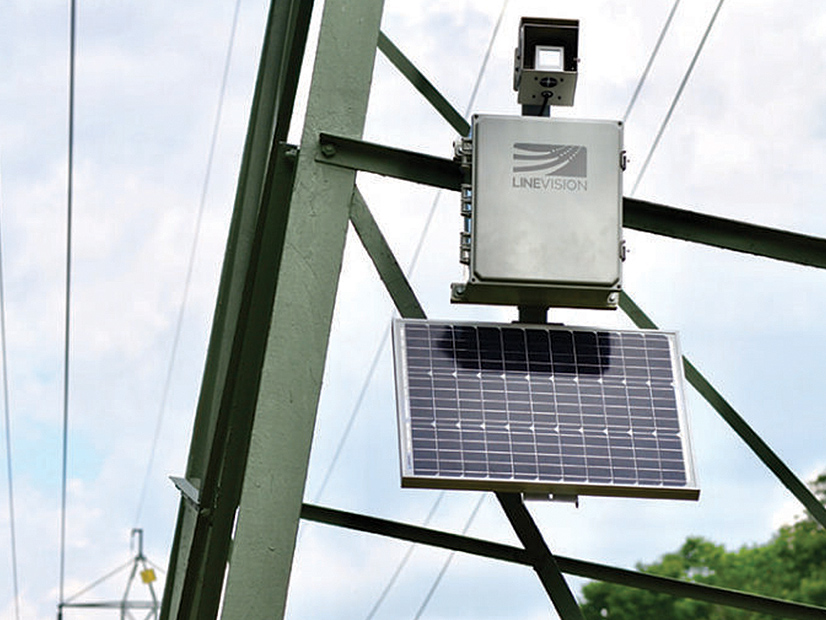
FERC opened a Notice of Inquiry Thursday to build an evidentiary record on the use of dynamic line ratings (DLRs), an initiative it signaled in its Dec. 16 order calling for the end of static transmission line ratings.
The December order required transmission providers to employ ambient-adjusted ratings (AARs) for short-term transmission requests for all lines that are impacted by air temperature (RM20-16, Order 881). But the commission did not mandate the use of DLRs, saying more evidence was needed concerning DLRs’ costs and benefits. (See FERC Orders End to Static Tx Line Ratings.)
Thursday’s NOI solicits comments on potential criteria for DLR requirements, the benefits, costs and challenges of implementing DLRs, and timeframes for implementation. It also asks whether the lack of DLR requirements makes wholesale rates unjust and unreasonable (AD22-5). In the December order, the commission said the use of only seasonal and static ratings was unjust and unreasonable because it resulted in the underutilization of available transmission capacity.
Initial comments are due 60 days after publication in the Federal Register, with replies due 30 days later.
AARs vs. DLRs
While AARs are based on forecasted ambient air temperatures and the presence or absence of solar heating, DLRs also consider wind, cloud cover, solar heating intensity, precipitation and line conditions such as tension or sag.
The December order required transmission providers to use AARs as the basis for evaluating transmission service requests ending within 10 days. It also required providers to electronically update transmission line ratings at least hourly to allow for use of DLRs by transmission owners that voluntarily adopt them.
The order acknowledged that DLRs can benefit customers when the limiting element of a congested transmission facility is the conductor and conditions besides ambient air temperature impact the line’s capacity. It also noted that in addition to often allowing greater power flows, DLRs can also detect situations where power flows should be reduced to maintain safety and reliability.
Costs
But the commission said it could not consider mandating DLRs without more information on their costs and challenges, such as the costs of sensors and cybersecurity.
In the Order 881 proceeding, some, including SPP’s Market Monitoring Unit and industrial customers, endorsed DLRs. But, FERC noted, “many commenters, including nearly all transmission owners that filed comments about DLRs, either opposed a requirement to implement DLRs on all transmission lines or opposed a DLR requirement in any form.”
FERC cited Bonneville Power Administration’s estimate that DLR implementation would cost more than $1 million per transmission line in monitoring equipment, software and hardware, and MISO Transmission Owners’ estimate of $100,000 to $200,000 per transmission line, or $1.5 billion for the entire RTO. SPP said DLR could require an energy management system (EMS) upgrade at a cost of up to $1 million.
Among the NOI’s 29 questions were queries on:
- whether FERC should require DLR implementation on all or only certain transmission lines, and what criteria (e.g., congestion, curtailment levels, voltage levels, infrastructure, and/or geography/terrain) it should use to decide;
- whether FERC should regularly reevaluate lines to ensure its criteria still apply;
- whether there are differences between RTOs/ISOs and non-RTO/ISO transmission providers that the commission should consider;
- how DLR requirements should be considered in regional transmission planning and interconnection processes;
- what transparency measures the commission should require (e.g., informational reports that show which transmission lines meet criteria for DLR implementation);
- the potential impacts to reliability if the digital devices that monitor or communicate line conditions are hacked in a cyber event;
- whether FERC should order NERC to evaluate how a DLR requirement could introduce risks to the operation of the bulk electric system and whether any standards require modification to address risks;
- whether FERC should require the use of sensors or just more up-to-date weather forecasts than required in Order 881;
- how often transmission providers should be required to calculate transmission line ratings and for what services (e.g., hourly point-to-point; daily point-to-point; weekly point-to-point, etc.);
- whether the commission should limit the number or proportion of transmission elements on which a transmission provider must implement DLRs at any one time; and
- the appropriate time frame for identifying which lines are subject to DLRs, designing a DLR system, and integration and testing of the system.



